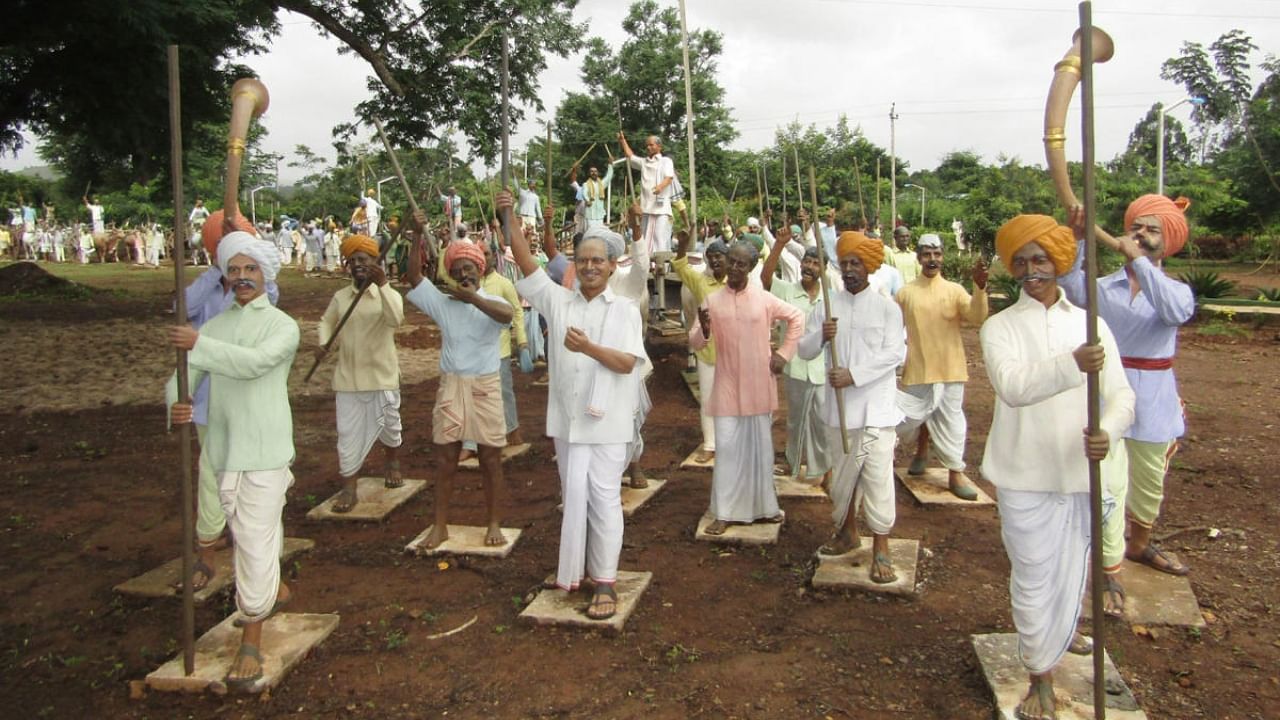
Esuru, a village in Shikaripur taluk of Shivamogga district, finds a pride of place in the history of the country's struggle for Independence.
Esuru was the first village to self-declare independence during the struggle.
Each resident of Esuru belongs to a family of freedom fighters, says Satish Kumar of the village.
"Unfortunately, most youth here are not aware of the significance and sacrifices of their forefathers."
He says, "While the country is celebrating its 75th Independence Day, we are in our 80th year of Independence. To mark the occasion, villagers took out a 80-foot-long tricolour procession. It is high time the country gave the village the credit it deserves."
However, the fighting spirit, which was once high among people of all age groups, is hardly seen now, says Narayan Kumar, a resident of Esuru and descendant of a freedom fighter.
"Our youth lack knowledge of the historical significance of the village. Men aged between 45 and 55 years have some fighting spirit and they want the village to be recognised at the national level," he adds.
In 1942, Esuru residents had refused to pay land revenue and decided to run their own government. A board was put up near the village school, which read, "Esuru has an independent government. No officer can step into the village without permission from the independent government."
Tahsildar, SI killed
"The villagers killed the tahsildar and sub-inspector (SI) when they had entered the village to collect revenue. This had led to violent incidents in the village," retired history professor D S Somashekhar explains.
Two children, Jayanna and Mallappaiah, were made the amildar (administrative officer) and the SI of the 'independent' government.
They deliberately chose children as government heads as they believed that the British would not take disciplinary action against them.
A team of officials led by a tahsildar and an SI entered the village on September 28, 1942.
An argument ensued between the officers and villagers over the revenue issue. In the heat of the moment, the tahsildar and SI were killed.
Following this, the government officers, along with 500 police personnel, ransacked the entire village.
Houses of people who led the struggle were set on fire. After legal proceedings, five villagers — K Gurappa, Ginahalli Mallappa, Badakalli Halappa, Sooryanarayanachar and Gowdru Shankarappa — were hanged to death, 17 were sentenced to life imprisonment and the remaining villagers were awarded shorter terms of imprisonment.
Esuru residents believe the Centre should recognise the village at the national level and transform it into a monument.